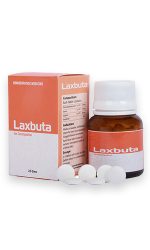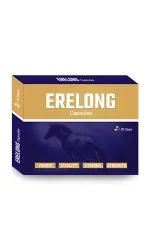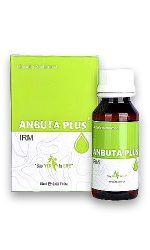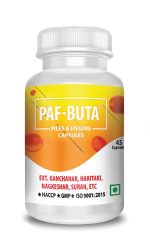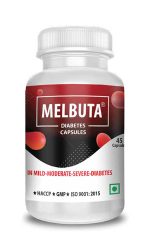
E-ISSN: 2320-7078
P-ISSN: 2349-6800
JEZS 2015; 3 (2): 208-210
© 2015 JEZS
Received: 01-04-2015
Accepted: 20-04-2015
Raheleh Mehrabi
Department of Biology, Faculty
of Basic Sciences, University of
Damghan, Damghan, Semnan
province, Iran.
Gholamreza Bagheri
Zabol University of Medical
Sciences, Zabol, Iran.
Farhad Alipour
Department of Zoology,
University of Pune, Pune,
Maharashtra 411007, India.
Correspondence:
Raheleh Mehrabi
Department of Biology, Faculty
of Basic Sciences, University of
Damghan, Damghan, Semnan
province, Iran.
Anticancer effects of Anbuta and Vinoblastin on breast cancer cell line ZR 75-1
Raheleh Mehrabi, Gholamreza Bagheri, Farhad Alipour
Abstract
Vinblastine is an anti-microtubule drug used to treat certain kinds of cancer and Anbuta is a homeopathic medicine which are indicated on those diseases where the immune system is depressed. Aim of current study is assessment of mentioned medicines on breast cancerous cell line. The ZR75-1 cell line were treated with the different concentration of drugs and incubated for different times. The results demonstrate the highest toxicity of drugs at 1 mg/ml concentration for Anbuta and 100 μg/ml for Vinblastine after 72hrs incubation time. The results of current study was demonstrated the anti-cancer and protective activity of Anbuta as a potent homeopathic drug, against breast cancer.
Keywords: Anbuta, Breast cancer, Vinblastine, Cell line
1. Introduction
Cells become cancerous when they lose their ability to check division [1]. However this disease could treated with different strategies such as chemotherapy. It also could protect along with different natural ayrovedic products.
Breast cancer is commonly originated from the inner lining of milk ducts and lobules which are supplying milk [2]. Breast cancer accounts for 22.9% of all cancers in women, worldwide [3]. The survival rate for the disease is depending on the cancer type, stage, treatment, and geographical location of the patient [4].
Vinblastine is an anti-microtubule drug used to treat certain kinds of cancer including breast cancer [3]. At different concentrations Vinblastine suppresses microtubule dynamics and reduces microtubule polymer mass [4]. Recent findings indicate that Vinblastine produce microtubule fragments by stimulating microtubule minus-end detachment from their organizing centers [5].
Macrophages are capable of recognizing any infectious agents that have penetrated the body, and they start exchanging the information with other cells of the immune system, making the immune system fight against infections in the body [5, 3]. Anbuta immune-modulators are the highly diluted and dynamised homeopathic medicament. Anbuta releases natural elements which enter the defense system, giving better control over the disease. This drug is a combination of widely used homeopathic dilutions, which feature in the German and U.S. pharmacopoeia.
Material and Methods
The study has done in Department of agriculture, University of Pune, Pune, India; within July 2013 to November 2014.
Anbuta (Natel Neutratec (India) Pvt. Ltd) was used as a test compound and different concentrations wereserially prepared (1– 0.001 mg/ml). Vinblastine (Himedia, (India) Pvt. Ltd) was used as positive control. It was serially diluted from 100μg/ml to 0.1 μg/ml.
The breast cancer ZR75-1 cell line was obtained from National Center for Cell Sciences [NCCS, Pune]. These cells were grown and maintained in PMRI-1640 media with 10% heat inactivated fetal Bovine serum, at 37°C and 5% CO2.Cells were passage weekly by 0.05% trypsin solution and daily observed under an inverted microscope to check for any contamination. Equal of cell suspensions were mixed with 0.4% Trypan blue in PBS, and the unstained viable cells were determined.
The cell viability assay was further studied using MTT assay, in 2 x 106 densities per ml in the 96 well tissue culture plates, using formazan. The cells were treated with 20 μl MTT solution (5mg/ml in PBS) per well and incubated for 2-4 hours in CO2 incubator. After incubation, 60 μl/well of DMSO was added and incubated in dark place at room temperature for 10 minutes.
Absorbance was taken at 550 nm using multiwell plate reader. The cell viability was measured using the following formula:
Results
As shown in Table 1, both the concentration of drugs and incubation time induced the viability of cancerous cells. Various concentration of Vinblastine did not affect the viability of ZR-75-1 Cells after 48 hours. Hence, it was a difference in percentage of viability for the cells which were treated with Anbutain the same incubation time. In the cells treated with Anbuta, the highest viability was observed at 0.001 mg/ml concentration of the drug. Various concentration of Vinblastine also affected the viability of ZR-75-1 Cells after incubation for 72 hours. The highest viability of the cells in Vinblastine was observed at 0.1μg/ml concentration after 72 hours incubation.
For ZR-75-1 cells which were treated with Vinblastin and Anbuta, Also the increase in the nitrite production was seen with the increase in concentration of drugs. Increasing the concentration of nitrite was along with increasing the period of incubation time for both of the drugs, respectively.The Nitrite level of the cells which were treated with Anbuta, incubating for 72 hourswas the highest; and also the Nitrite level of the cells which were treated with Vinblastin and incubated for 24 hours the Nitrite level was the lowest.In this concentration Nitrite production was higher at 72hrs incubation time and lower was observed at 24hrs incubation time as per the cell which were treated with both of the drugs.
Discussion
Plant has been the constant source for the herbal treatment from centuries. Drug discovery from herbal plant to cure the cancer is a breakthrough to cut the side effects involves with the chemical. From last half century many plant secondary metabolites and their derivative have been applied to manipulate the cancer [5-6].
Herbal extracts are considered a rich source of alkaloids and flavonoids [7]. They have the capability to generate ROS. An excessive accumulation of ROS beyond toleration limit generally pushes the cancer cells toward apoptotic cascade [8].
Since Conium is a rich source of alkaloids [10, 11] which have been reported to have anti-cancer properties, we became interested to examine if it has any such anti-cancer effects against HeLa cells and can produce ROS and cause mitochondrial membrane de-polarization.
Ferula asafetida, Conium maculatum, is one of the anticancerous ingredients of Anbuta. Play an essential roleas an antinociceptive, anti-inflammatory, antipyretic and anticarcinogenic agent [3-4].
In this study we are introducing some graphical proof to represent that Anbuta, an Ayrovedic drug could be an active agent against cancer. The results indicate that Anbuta is a potential anticancer drug. The anticancer property of Anbuta is possibly associated with the anticancer and the cytotoxic ingredients. The in vitro experiments indicate that Anbuta was cytotoxic at the dose dependent manner compared to vinoblastin which was treated at μg dosages. However, thisaspect of the study needed more work using different types of tumor.
Conium maculatum is an extremely poisonous flowering weed, known as Hemlock and belongs to the family Apiaceae. Conium contains several pyridine alkaloids like coniine, Nmethylconiine, conhydrine, pseudoconhydrine and gammaconiceine, precursors of some other hemlock alkaloids [1]. Among these, the most notable one is coniine, the properties of which are similar to nicotine. It disrupts the functions of the central nervous system by binding with nicotinic acetylcholine receptors [2, 4]. As for example, Conium is the main remedy for prostate gland and swelling of the testis. In homeopathy, it is used as a remedy for breast cancer and cancer of cervix uteri [4], but its action has not yet been scientifically validated except for the report that it can inflict DNA damage by generating reactive oxygen species (ROS) [5]. In this study, we contemplate to elucidate the probable mechanism of action of the drug in inducing apoptosis in the cell line HeLa.
In the current study, the effect of different concentrations of Immunomodulator Anbuta, along with Vinblastin was determined on breast cancer cell line. The viability of the cells was determined with MTT Assay to check the cytotoxic effects of drugs on the cells. Although, the value of OD shows the positive relation with the viability of the cells.
References
1. Tripathy G, Pradhan D. Evaluation of In-vitro Anti- Proloferative activity and In-Vivo immunomodulatory activity of Beta Vulgaris J Pharm Clin Res 2013; 211(6):127-130.
2. Haishun Xu, Li Yao, Hongxiang S, Yuanwen W. Chemical composition and antitumor activity of different polysaccharides from the roots Actinidia eriantha. Carbohydr. Pol 2009; 78(4):316-322.
3. Denkert C, Loibl S, Noske A, Roller M, Müller BM, Komor M et al. Tumor-associated lymphocytes as an independent predictor of response to neoadjuvant chemotherapy in breast cancer. J Clin Oncol 2010; 28(3):105-113.
4. Mosaddegh M, Hamzeloo MM, Ghafari S, Naghibi F, Ostad SN. NPC 2010; 5(4):511-4.
5. Acosta CJ, Macabeo AP, Santiago L. Assessment of and Antioxidant Properties of Ficus pseudopalma Blanco Leaves (Moraceae) Current Research in Biological and Pharmaceutical Sciences 2013; 29(2):22-30.
6. Bueno PR, Buno CB, Santos DL, Santiago L. Antioxidant Activity of Ficus pseudopalma Blanco and its Cytotoxic Effect on Hepatocellular Carcinoma and Peripheral Blood Mononuclear Cells. Curr ResBio Pharma Sci 2013; 20(2):14-21.
7. Ganesh SA. Phytochemical Analysis of Acanthus ilicifolius and Avicennia officinalis by GC-MS. Res J Phytochem 2011; 17(5):60-65.
8. Smith V, Sausville EA, Camalier RF et al. Comparison of 17-dimethylaminoethylamino-17- demethoxygeldanamycin (17DMAG) and 17-allylamino- 17-demethoxygeldanamycin (17AAG) in vitro: effects on Hsp90 andclient proteins in melanoma models. Cancer Chemother Pharmacol 2005, 56(2):126-37.
9. Elsharkawy EA. Anticancer activity of Lactuca steriolla growing under dry desert condition of Northern Region in Saudi Arabia. J Nat Sci 2013; 3(2):5-18.
10. 1. Disis ML. Immune regulation of cancer. J Clin Oncol 2010; 28(3):4531-4538.

